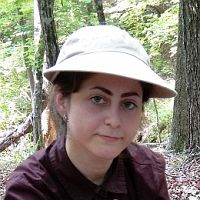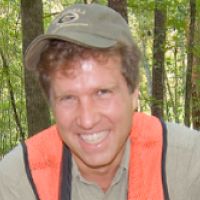Foroughi et al., 2019
Dynamics of Soil Phosphorus Fractions over 60 Years of Forest Development
Foroughi, Maryam, Daniel Richter, and Daniel Markewitz (2019)
Soil Science Society of America International Soils Meeting, San Diego, CA, 6-9 January 2019
-
Calhoun, GRAD STUDENT
-
Calhoun, INVESTIGATOR
-
Calhoun, INVESTIGATOR
Abstract
Slowly cycling P fractions have a significant role in soil P bioavailability in time scales longer than a growing season. The objective of this study is to evaluate P fractions and P bioavailability in Piedmont Ultisols that supported forest development from 1962 to 2017. Soil samples were collected from four depths (0-7.5, 7.5-15, 15-35, and 35-60 cm) at 16 permanent plots in the Calhoun Experimental Forest in Union County, SC approximately every five years between 1962-2017. Research at this site from 1962 to 1990 demonstrated the role of the main fraction of slowly cycling P (Ca-associated P) can play in sustaining soil bioavailable P. We extend this record another 27 yrs and incorporate responses to clear-cutting in 2007. Eight of these plots were clear-cut in 2007 and replanted prior to the 2009 growing season. These lands were originally planted with loblolly pine seedlings after having been cultivated in cotton for about 150 years. The 60-yr-old plots are still dominated by pine in the overstory but have mixed hardwoods in the understory. To evaluate changes in soil P fractions the Hedley fractionation method was followed as modified by Tiessen and Moir. Bioavailable P was measured with the Mehlich-III extraction method. Preliminary results from the Mehlich extraction show that bioavailable P in surface soil (0-7.5 cm) significantly decreased from 31.71 to 20.15 ug-P g-1 soil (p=0.014) from 1962 to 2017 extending a trend observed through 1990. A novel finding was increased in Mehlich P in the 35-60 cm depth from <0.2 to 1.49 ug-P g-1 soil. The P fractions data indicate that the NaHCO3 extractable inorganic-P pool, which is associated with Fe and Al bound P, decreased at the soil surface but increased in the 35-60 cm subsurface soil because of sorption site with organic matter and release P.
Citation
Foroughi, Maryam, Daniel Richter, and Daniel Markewitz (2019): Dynamics of Soil Phosphorus Fractions over 60 Years of Forest Development. Soil Science Society of America International Soils Meeting, San Diego, CA, 6-9 January 2019.
 This Paper/Book acknowledges NSF CZO grant support.
This Paper/Book acknowledges NSF CZO grant support.
Explore Further



